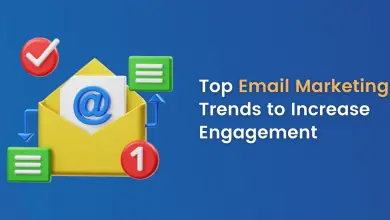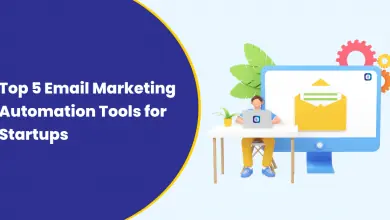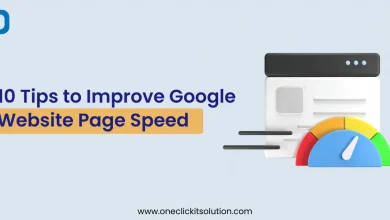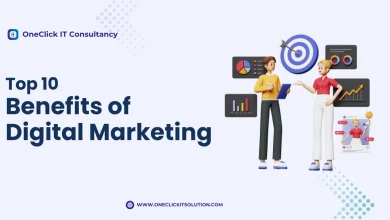Organic Marketing vs. Paid Marketing: What You Should Know?

Feeling a bit stuck with your marketing game? You’ve tinkered with your website, fired up those social media posts, and chased organic rankings, but it’s like spinning your wheels in the mud. Or perhaps you’ve thrown some dollars into paid digital marketing, but it’s not raining ROI as expected. If this sounds like your marketing journey, then maybe it’s time to think about merging your organic and paid digital marketing strategies.
But hold on, no one’s asking you to empty your bank account on some grand ad campaign! Merging Organic Marketing vs. Paid Marketing can be a wallet-friendly way to supercharge your results and cast a wider net. By blending the best of both worlds, you can whip up a top-notch marketing plan that not only brings in more traffic and leads but also gives your revenue a welcome boost.
In this ultimate guide, we’re going to take you on a deep dive into the dynamic universe of organic and paid digital marketing. We’ll serve you some practical tips and real-life organic examples to show you how to make these two marketing superheroes work in harmony. Whether you’re a newbie in the digital marketing game or a seasoned pro looking for fresh tricks, this guide’s got something up its sleeve for you.
Understanding Organic & Paid Digital Marketing
To gain a better understanding of organic and paid digital marketing, let’s first clarify these terms. Organic marketing, also known as inbound marketing, focuses on improving your website and creating high-quality content to naturally attract visitors, and build brand recognition. This includes strategies like SEO, content marketing, social media engagement, and email outreach. The essence of organic marketing lies in establishing connections with potential clients and providing them with valuable, authentic content to address their needs.
On the other hand, paid digital marketing involves investing in various online advertising channels to expand your reach and achieve faster results. This includes PPC digital marketing, social media promotions, eye-catching display ads, and other online advertising formats. Paid digital marketing aims to drive traffic to your website or dedicated landing pages and convert visitors into leads or loyal customers.
Organic marketing embraces a long-term approach, fostering strong relationships with your target audience through valuable content. It utilizes SEO marketing strategy, organic social media marketing outreach, and other strategies to increase brand visibility over time. The goal is to position your business as a thought leader in your industry and build unwavering trust with your audience.
paid digital marketing, on the other hand, focuses on increasing brand visibility through advertising space. It employs various strategies like search engine ads, social media campaigns, and display ad placements. Paid digital marketing delivers faster results but at a higher cost and with less long-term sustainability compared to organic marketing. Its main objective is to rapidly expand your audience and drive website traffic.
Now that we have clarified the basics of Organic Marketing vs. Paid Marketing, let’s take a closer look at their examples, strengths, and limitations.
Organic Marketing: Strategies, Advantages & Drawbacks
Organic marketing is a long-term digital marketing strategy used by companies to enhance brand visibility, interact with potential customers, and promote their business without the need for substantial financial investment. Here are straightforward organic examples that leverage marketing strategies:
- Search engine optimization (SEO): SEO is all about making your online presence more visible by tweaking your website to soar up the search engine rankings. It involves optimizing content, keywords, and technical aspects to climb up those search rankings and get you noticed by the right people.
- Social Media Posts: These are your communications on platforms like Facebook, Twitter, and Instagram. It involves thoughtfully crafting content on organic social media marketing channels to connect with your audience, spark conversations, and build relationships that last.
- Natural link building: This strategy focuses on creating high-quality content that encourages other websites to link to yours. It’s a time-tested way to enhance your online credibility and improve domain authority of your website.
- Website Optimization: Your website is your digital storefront. This process involves fine-tuning your website’s content, structure, and design to achieve better placement in search engine results. It’s about making your website more search-engine-friendly.
- Content creation: Content isn’t just words on a screen; it’s the heart of your online identity. Besides search engine marketing blogs, think captivating case studies, authentic employee or customer testimonials, engaging videos, and more. Diversifying your content menu keeps your audience coming back for more.
- Affiliate programs: Partnering with other businesses or individuals to promote your offerings can significantly expand your reach. It’s a mutually beneficial arrangement where affiliates promote your products or services in exchange for a commission, helping you grow your business.
Advantages of Organic Digital Marketing:

- Cost-effective: Organic digital marketing is a budget-friendly method to drive website traffic.
- Builds brand authority: It helps establish your business as an industry leader and fosters trust among your audience.
- Long-term results: Although it demands time and consistency, organic marketing can yield enduring outcomes.
- Authenticity: Organic marketing tends to feel more genuine to audiences because the content is educational, pertinent, and valuable.
Drawbacks of Organic Digital Marketing:
- Time-consuming: Consistent effort and time are required to develop and distribute content.
- Slow results: Organic digital marketing may not be suitable if you require rapid results.
- Requires expertise: Effectively implementing organic marketing necessitates expertise in SEO, social media, and other channels.
To sum it up, organic digital marketing serves as a long-term digital strategy enabling businesses to bolster brand awareness, engage with potential customers, and promote their offerings through non-paid techniques. While it offers numerous advantages, it can be time-consuming, may yield slow results, and demands expertise for maximum effectiveness.
Paid Media Marketing: Strategies, Advantages & Drawbacks
Paid digital marketing, also known as outbound marketing, involves leveraging advertising platforms to reach a specific audience. Paid digital marketing offers immediate visibility and control. When executed effectively, Paid digital marketing can drive instant traffic, generate leads, and boost sales.
- Pay-per-click (PPC) advertising: PPC digital marketing involves paying each time a user clicks on your online ad. It’s an effective way to get immediate visibility and traffic to your website. Platforms like Google Ads allow you to bid on keywords related to your business, and your ad appears when users search for those keywords.
- Social media advertising: Major social media platforms offer advertising options such as Facebook paid marketing, Twitter promotion, and LinkedIn paid ads to allow you to target specific audiences based on demographics, interests, and behaviors. Social media ads can appear in users’ news feeds, stories, or as sponsored content.
- Influencer marketing: Influencer marketing involves collaborating with individuals who have a substantial and engaged following on social media or other online platforms. These influencers promote your products or services to their audience, leveraging their credibility and trust.
- Display advertising: Display advertising entails placing banner ads on websites, typically in the form of images or graphics. These ads can be static or dynamic and are strategically positioned on websites that your target audience frequents. They are designed to capture users’ attention and drive them to your website.
- Retargeting: Retargeting, also known as remarketing, involves showing ads to individuals who have previously visited your website or engaged with your brand in some way. It serves as a reminder and encourages users to return to your site to complete a purchase or take another desired action.
- Affiliate marketing: This approach involves forming partnerships with other businesses or individuals, often referred to as affiliates, who actively promote your products or services. Affiliates profit from commissions generated by sales, leads, or actions stemming from their marketing campaigns. It’s a performance-based marketing model that can expand your reach.
Advantages of Paid Media Marketing:
- Quick results: Paid digital marketing delivers rapid outcomes, making it ideal for businesses seeking immediate results and a wider reach in a short period.
- Highly targeted: You can precisely target your advertisements based on demographics, interests, online behaviors, and more. This precision guarantees that your message finds its way to the audience with the highest conversion potential.
- Measurable: Paid search marketing offers precise measurement tools, allowing you to track key performance metrics like click-through rates, conversions, and return on investment (ROI). This data-driven approach enables you to assess the effectiveness of your campaigns and make informed adjustments.
Drawbacks of Paid Digital Marketing:
- Costly commitment: Paid search marketing campaigns can be expensive, particularly for competitive keywords or industries. Budget constraints may limit your ability to maintain long-term campaigns.
- Less authentic: Some audiences may perceive paid advertisements as less authentic or more sales-focused, potentially leading to skepticism or resistance.
- Short-term results: While paid search marketing yields quick outcomes, it may not deliver sustained, long-term results. Momentum relies on persistent investment and pausing spends risks losing ground quickly.
Paid search marketing offers a vast array of tools, from the immediacy of PPC digital marketing campaigns to the trust-building potential of influencer partnerships. While offering advantages such as quick results, precise targeting, and measurability, it’s essential to consider the associated drawbacks, including costs, authenticity concerns, and short-term results.
Comparison: Organic Marketing vs Paid Marketing
In the digital marketing world, organic and paid digital marketing strategies are like two sides of a coin. They both serve their purposes, but they’re fundamentally different. Let’s unpack Organic Marketing vs. Paid Marketing to understand their unique characteristics and how they can benefit businesses.Here’s a breakdown of the key differences:
- Content Creation
Organic marketing places its bets on creating high-quality, informative content that genuinely resonates with your target audience. It’s about being a helpful resource and building trust. Paid marketing, on the contrary, relies on investing in advertisements to get your message across. It’s more about capturing attention through paid placements.
- Budget Considerations
Organic marketing is like planting seeds in a fertile soil; it takes time, effort, and consistent nurturing to see the harvest. It’s a long-term strategy that may not cost as much in terms of money but demands patience. Paid digital marketing can deliver quicker results, but it often requires a more substantial financial investment. It’s like turning on a faucet to get immediate results.
- Sustainability Factor
Organic marketing is akin to building a strong foundation for your digital presence. It’s a sustainable strategy that, once established, can yield fruitful results over the long haul. Paid marketing involves strategies that are capable of delivering rapid outcomes, however, most of them are not sustainable in the long run.
- Targeting Precision
Organic marketing centers around attracting visitors naturally. Your goal is to pull in an audience that is genuinely interested in what you have to offer. Paid marketing, however, gives you laser-like precision when it comes to targeting. You can pinpoint specific groups based on demographics, interests, and behaviors.
- Conversion Rates
Organic online marketing patiently nurtures your audience, building trust and rapport over time. It’s like slowly warming up to someone before asking them out. In paid digital marketing, the aim is more direct. By using tailored campaigns, it seeks to promptly move audiences through the sales funnel, leading to faster conversions.
As you can see, organic and paid marketing have their own distinct flavors. By understanding these nuances, businesses can craft a comprehensive marketing strategy that blends the best of both worlds, resulting in increased traffic, more leads, and ultimately, greater revenue.

Finding the Right Balance
Whether you’re just starting out or growing an established brand, crafting an effective marketing strategy is key. While organic and paid tactics both have merit, the savvy entrepreneur recognizes the value of an integrated approach. Let’s work on getting that balance just right:
- Define Your Business Goals
Before diving into either organic or paid digital marketing, it’s essential to first define your business goals and objectives. This preliminary step lays the foundation for your marketing strategy and helps determine which approach aligns best with your specific needs.
- Analyze Your Industrial Landscape
Every industry has its unique characteristics and challenges. By analyzing your industry, you can gain valuable insights into which marketing approach is likely to be the most effective. For instance, if your industry is fiercely competitive, paid digital marketing might be the more suitable choice.
- Determine Your Budget Allocation
Budget allocation is a critical aspect of this balancing act. You’ll need to determine how much of your marketing budget can be allocated to organic and paid marketing strategies. This process provides clarity on your financial boundaries and guides your marketing decisions.
- Create a Decision-Making Framework
A well-structured decision-making framework is invaluable in guiding your marketing choices. This framework should consider factors such as your business goals, industry dynamics, and budget constraints. It essentially becomes your compass, pointing you in the right direction based on specific circumstances.
- Leverage Integration to create a foolproof campaign
Peak impact & ROI are often witnessed when organic and paid marketing efforts are integrated seamlessly. This integrated approach enables your business to create a holistic marketing plan that not only drives more traffic but also generates an abundance of leads and ultimately boosts revenue.
Finding the ideal equilibrium between organic and paid digital marketing involves numerous considerations. By leveraging both approaches, businesses can construct a comprehensive marketing plan that maximizes results, driving increased traffic, leads, and revenue.
Unlocking Your Digital Marketing Potential with OneClick
OneClick is a dynamic digital marketing agency that stands ready to empower businesses in their online marketing endeavors. Our extensive suite of services is meticulously designed to cater to diverse needs, ensuring that your digital presence shines. Let’s delve into the array of services we offer:
- Best PPC Marketing Management: Our PPC digital marketing services catapult businesses into the limelight through strategically crafted paid advertising. This swift and effective approach enhances visibility, driving an influx of visitors to your website in no time.
- Web Design: At OneClick, we understand that a well-designed website is your online business card. Our web design services focus on creating an impactful online presence, instilling credibility, and making an unforgettable first impression.
- SEO Marketing Strategy: Our SEO services are tailored to boost your ranking in search engine results. By attracting organic online marketing traffic over the long term, we help your business climb the digital ladder with enduring visibility.
- Content Creation: Engaging and entertaining your audience is our forte. We offer content creation services that encompass a wide spectrum, from compelling search engine marketing blogs to captivating videos and informative infographics.
- Social Media Marketing: Social media platforms are vibrant landscapes where you can interact with your audience. Our social media marketing services enable businesses to reach a wider demographic, fostering brand awareness and a devoted following.
- Influencer Marketing: Leverage the power of trust and credibility with our influencer marketing services. Partnering with influencers allows your business to reach new horizons and build trust through endorsements from respected voices.
OneClick’s holistic approach helps businesses strike a harmonious balance between organic and paid marketing. With our comprehensive marketing plans, we maximize your results, driving increased traffic, leads, and ultimately revenue.
Final Thoughts
Organic Marketing vs. Paid Marketing, though different in approach, both serve as powerful pillars of digital marketing. Organic online marketing, though gradual, builds a sustainable and authentic brand presence. It resonates with audiences seeking genuine value and engagement. On the other hand, paid digital marketing provides an immediate visibility boost, targeting specific audience segments and driving prompt results.
When strategized correctly, these methodologies can significantly elevate a business’s online footprint and more effectively captivate their target demographic. The magic lies in understanding and leveraging the unique advantages each offers. OneClick, a top-tier digital marketing agency, specializes in harmonizing these two strategies.
Our tailored approach, based on deep industry insights and your unique business objectives, ensures that you get the best of both worlds without overshooting your budget. Connect with us and let’s co-create a strategy that resonates, engages, and converts!
FAQs
Measuring the effectiveness of an integrated marketing approach involves tracking key performance indicators (KPIs) that align with your business goals. For organic online marketing, monitor website traffic, keyword rankings, and engagement metrics like time-on-page and bounce rate. For paid digital marketing, focus on metrics like click-through rate (CTR), conversion rate, and return on ad spend (ROAS). By integrating data from both strategies, you can assess overall campaign performance. Tools like Google Analytics and marketing automation platforms are invaluable for comprehensive tracking. Ready to maximize your marketing results? Explore OneClick’s comprehensive digital marketing services, tailored to meet your unique business goals.
When integrating organic and paid digital marketing, establish a budget allocation that aligns with your objectives. Allocate more to paid efforts if you seek immediate results, but reserve a portion for long-term organic strategies. Consider your industry competitiveness and the desired reach. Regularly review and adjust your budget based on campaign performance. This balanced approach helps you achieve both short-term and sustainable results. Unlock the full potential of your marketing budget with OneClick’s expert guidance. Explore our tailored digital marketing services today.
A3: Tracking user behavior and conversions in organic marketing is crucial for assessing its effectiveness. Google Analytics is a powerful tool that provides insights into user interactions, goal completions, and conversion paths on your website. Additionally, marketing SEO platforms like Moz and SEMrush offer valuable data on keyword rankings, organic traffic, and backlink analysis. Leveraging these tools allows you to make data-driven decisions to enhance your organic marketing strategy. Ready to harness the full potential of your organic marketing? Partner with OneClick for data-driven insights and transformative results.
Indeed, retargeting in paid digital marketing can significantly boost conversion rates. Employ dynamic retargeting ads that display products or services a user previously viewed. Segment your audience to deliver personalized content, and set frequency caps to avoid overwhelming users. A/B testing different ad creatives and landing pages can help optimize your retargeting efforts. Continually refine your strategy to ensure it aligns with your campaign objectives. Ready to supercharge your retargeting strategies? Collaborate with OneClick for tailored paid digital marketing solutions that yield remarkable results.
Data privacy compliance is paramount in today’s digital landscape. To ensure compliance in both organic and paid digital marketing, familiarize yourself with relevant regulations like GDPR or CCPA, and stay updated on changes. Obtain explicit consent when collecting user data and clearly communicate your data usage policies. Regularly audit your data handling practices and invest in secure data storage solutions. Partnering with experts in data privacy can provide peace of mind and maintain trust with your audience. Prioritize data privacy and compliance with OneClick’s digital marketing services, designed to safeguard your brand and reputation.





